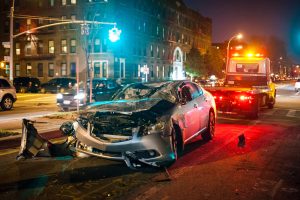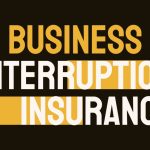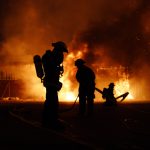The Perilous Crossroads: Unveiling Florida’s Most Hazardous Intersections
In the sunshine state of Florida, there are countless beautiful sights to see and places to explore. However, amid the palm trees and sandy beaches, lie some of the most dangerous intersections in the country. With a high traffic volume and a mix of tourists and locals, these intersections can constantly threaten motorists, cyclists, and pedestrians. In fact, according to the Florida Highway Patrol, there were eleven deadly crashes in Central Florida within the first week of 2024 alone.
What Causes These Crashes?
These intersections are scattered all over Florida and prove dangerous for a variety of different reasons including vacationers not knowing the area or traffic patterns, heavy general traffic, distracted driving, poor road conditions, wildlife, driving under the influence, street racing, or just poor driving in general. Other factors can include poor signage, inadequate lighting, discontinuous sidewalks, and jaywalkers.

Accident Hot Spots Across Florida
With data gathered by the National Highway Traffic Safety Administration, Florida Highway Patrol, and Bureau of Transportation Statistics, we uncovered some of the most dangerous intersections in Florida. These intersections are considered dangerous because they are heavily trafficked, crowded, and challenging to navigate.
Knowledge is key, especially when it comes to navigation. Understanding where accident hot spots are is the first way to prevent an accident, especially if you are a visitor to Florida.
Miami-Dade County Hot Spots
Miami is a diverse city in Florida with a population of over 450,000 but is not spared from a high rate of traffic and traffic accidents. Several intersections in Miami are known to be inherently dangerous for a variety of reasons from congestion to poor driving. Some of the most dangerous in Miami specifically include:
- Brickell Avenue and Southwest 2nd Street
- Alton Road and Dade Boulevard
- Eighth Street and Ocean Drive
- SW 117th Avenue and 152 Street
- NE Second Avenue and 36th Street
- 87th and 36th Street
- 117th and Kendall Drive
- Pines Blvd and South Flamingo Road
 Broward County Hot Spots
Broward County Hot Spots
Coming in a close second in number of car accidents is Broward County, with the first on the list being considered the most dangerous in the entire country and the second the most dangerous in all of South Florida.
- Pines Boulevard and Flamingo Road in Pembroke Pines
- The intersection of U.S. Route 441 and Pembroke Road near Hollywood
- Flamingo Road and Stirling Road in Pembroke Pines
- Dixie Highway and Commercial Boulevard in Fort Lauderdale
- Sunrise Boulevard and Andrews Avenue in Fort Lauderdale
- NW 19th Street and 441 (State Road 7) in Lauderhill
Other significant FL Hot Spots
In general, Florida ranks near the top among the states for motor vehicle accident rates. A large factor in this is the large population of Florida plus the vacationers that frequent. Some of the most common reasons for accidents in Florida are distracted driving, running red lights, improper turns, and pedestrians. Some accident hot spots around Florida include:
- Hillsborough Avenue and Fletcher Avenue in Tampa
- Jefferson and Palmetto Boulevards in Palm Beach
- Pensacola Boulevard and Fairfield Drive in Pensacola
- Deen Still Rd and SR-33 in Polk County
Highway Hot Spots
After analyzing multiple types of accidents on multiple types of roadways, the National Highway Traffic Safety Administration concluded that while traffic accidents are more frequent on roads, highway accidents cause more damage and are more likely to cause loss of life due to higher speeds. Knowing which highways to take extra caution on and practicing safe driving can help avoid accidents. Here are a few highways in Florida that are known to have a high rate of accidents:
- Highway A1A in Fort Pierce
- South Dixie Highway
- North Federal Highway
- Florida Highway 1
What To Do After an Accident
Sometimes accidents are simply unavoidable. If you are hurt in an accident, immediately call 911 to get an officer to the scene. If physically able, take photos and gather witness reports of the accident yourself.
You should also seek immediate medical care, whether this is an ambulance ride to the hospital or taking yourself, seek treatment and have a doctor confirm your injuries were from the accident. Follow all medical advice and keep a record of medical records. In addition to medical records, it is important to get copies of the police report, any medical bills, or any other evidence you collected at the scene.
Next, contact your insurance provider and follow all directions they give you.
Finally, contact an attorney. Most of the time insurance companies will dissuade you from retaining counsel and if your accident was severe, this can mean less compensation for you. An experienced attorney will serve as your representative and act to your benefit to not only protect your interests but help get the compensation you are entitled to.




